 |
                   
|
Porsche 956
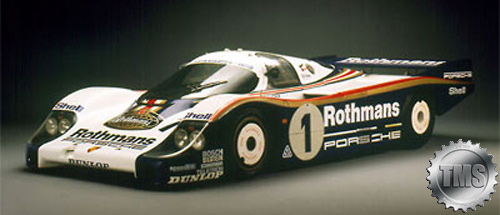
The sport´s governing body in Paris formulates the Group C regulations for sports prototype racing. These sportscar regulations remain valid until 1992. International motorsport is divided into three sub-categories: Group A (near-standard), Group B (major modifications) and Group C (few restrictions, prototypes).
At this time, the Group C era will be a time of Porsche´s greatest successes in motorsport. With the models 956 (1982-1984) and 962 (1985-1989) – all created under the direction of project leader Norbert Singer, Porsche wins five team, manufacturers‘, and drivers‘ world championships. These sportscars secure six Le Mans victories.
Initially 1982 is anticipated as a trial year for the 956. However, in the hands of Jacky Ickx and Jochen Mass as well as Derek Bell and Vern Schuppan the sportscar turns into a winner. Porsche immediately conquers the world championship for manufacturers and Ickx secures his first sportscar drivers‘ world championship title. Unforgettable is Ickx´s final spurt to victory and world champion status at Brands Hatch, where in the last hour he reels in Riccardo Patrese who leads by almost one lap.
At the Le Mans 24 Hours the 956 drives to a triple victory. Ickx/Bell (chassis 002) win ahead of Mass/Schuppan (chassis 003) and Haywood/Holbert (chassis 004). On the way to their Le Mans success Ickx/Bell break their own distance record from the previous year, despite regulations limiting fuel capacity, and complete 4,899.086 kilometres. The 956 with starting number one averages a speed of 205 kph and consumes 47.79 litres every 100 kilometres. By winning all categories, Porsche customers make the success perfect.
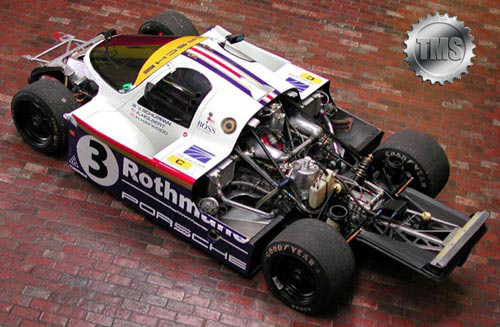
Bob Wollek collects the Deutsche Rennsportmeisterschaft (German Racing Championship) in a Porsche 936C of the Joest team with three wins ahead in Rolf Stommelen, who – like his French rival – initially competes in a 936, but switches to a Group C sportscar during the season.
In the USA, Porsche pilot John Paul jr. wins the IMSA Championship with nine victories and two second places from twelve rounds. His success, secured at the wheel of a 935, gives Porsche the manufacturers‘ trophy. Likewise, John Paul sr. also places his trust in the 935 – and brings home the IMSA Endurance Championship.
Ex-Formula 1 world champion Alan Jones competes in the Sport Sedan Championship of his homeland Australia with a 935, wins nine out of nine races and the championship. In Belgium Marc Duez claims the national rally championship in a 911 SC. The 911 Turbo of the German private driver duo, Georg Meminger and Fritz Müller, proves to be unbeatable in the FIA Cup races for Group B production vehicles, and in France Jacques Guillot, also driving a Turbo, carries off the FIA European Hill Climbing Championship.
On 18 December the 1.5-litre six-cylinder twin-turbo engine with the internal code TTE-P01 takes the test bed for the first time. The following year this vehicle will contest Formula 1 as a TAG Turbo – made by Porsche.
After his success in the German Rennsportmeisterschaft (German Racing Championship), the manufacturers‘ world championship, at IMSA and the Interseries, Bob Wollek takes home the 1982 Porsche Cup.
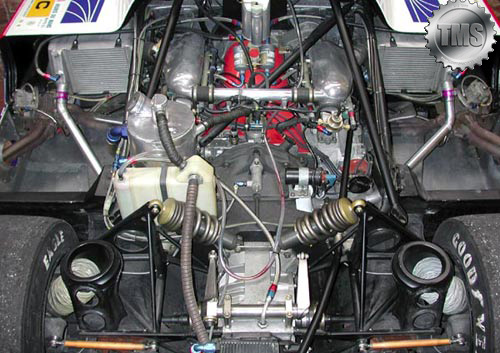
It‘s June 1981 when Weissach received the green light to create a two-seater racing sportscar complying with Group C regulations. In August Norbert Singer works with the first 1:5 model in the wind tunnel. On 27 March 1982 Jürgen Barth takes the car with chassis 001 through its paces on the Weissach circuit for the first time.
The rules limit the fuel consumption, at the same time downforce is a decisive factor, which increases the importance of aerodynamics more than ever. Thanks to the layout of the underbody, the 956 generates an “aerodynamic ground effect“. Although sliding skirts like in F1 are prohibited in Group C, the new Porsche reaches corning speeds not seen in sportscars by now. On the Mulsanne straight Porsche calculates a top speed of 350 kph.
The regulations stipulate the proportion of overall length to the wheel base, to avoid excessive long tail constructions. Hence, Porsche decides on a wheel base measuring 265 cm for the 956 ( 917: 230 cm) – the longest wheel base of all racing Porsches to now.
The 956 features a monocoque chassis made of aluminium. It is the first time that this style of construction is used at Porsche. All suspension components – of which only the lower wishbones are in the air flow – are designed to withstand the high stresses of the strong downforce.
The fully synchromesh five-speed gearbox is completely new.
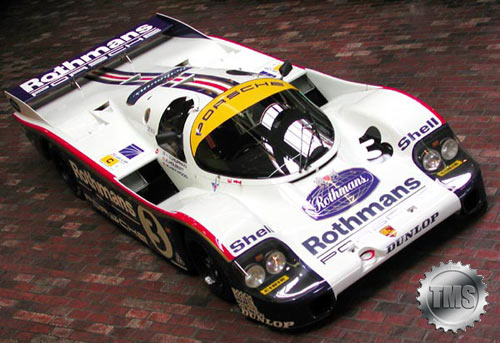
For the engine, Porsche at first sticks with a proven solution. The previous year, the 2.65-litre six-cylinder boxer with a twin-turbo brought the 936 victory in Le Mans. At around 635 hp (8,000 rpm) and a regulation weight of ca. 800 kilograms, the power to weight ratio is 1.35 kilograms per horsepower.
Porsche will build a total of 28 of the 956 vehicles to 1984.
Specifications
Engine: 935/76 B 6
Engine Location: Mid, longitudinally mounted
No. Cylinders: 6
Valvetrain: 4 valves per cylinder, Double Overhead Camshafts
Aspiration: 2 KKK Turbochargers
Cooling: Air-Cooled Cylinder, Water-cooled Cylinder Heads
Output: 620 HP at 8200 RPM
Displacement: 2649 cc
Fuel system: Fully Electronic Optimum Performance Bosch Fuel Injection System
Fuel Tank: 99 litre Safety Fuel Tank
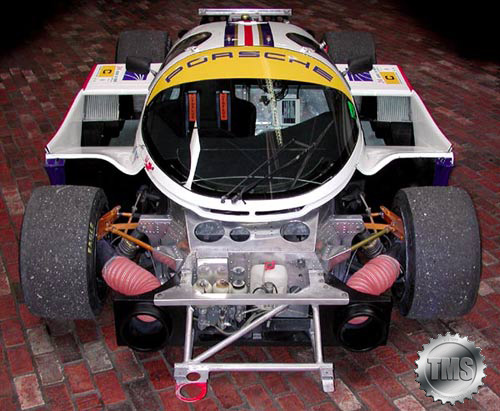
Driveline: Five-speed gearbox, single-plate dry clutch
Chassis: Aluminium monocoque with plastic body, independent wheel suspension, coil springs with two brake callipers per wheel, internally ventilated dual-circuit disc brakes
Dimensions:
Wheel Base: 2650 mm
Length: 4800 mm
Width: 2000 mm
Weight: 820 kg
Performance:
Top speed in excess of 350 km/h
Production 1982 - 1985
Numbers Manufactured 27
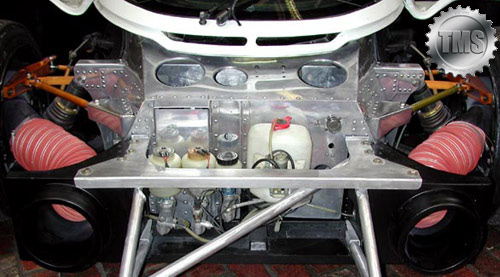
|
Copyright ©2000-©2023 TotalMotorSport
|